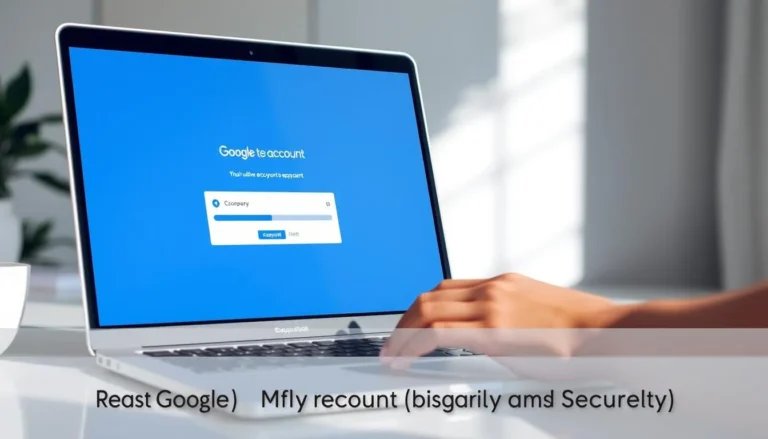Contacts Disappeared? Learn How to Sync and Restore Everything
Have you ever been in that awkward position where you suddenly realize you’ve lost all your contacts? It’s like having an address book, only to find it empty when you need a number the most. Restoring them can be quite the task, but don’t worry, I’ve been there too.
Recover Contacts can seem daunting, but with the right approach, it’s surprisingly simple. Whether you’re dealing with a lost phone, accidental deletion, or a technical glitch, I’ve tried various methods to help get those numbers back.
You might feel stuck, but what if I told you there are straightforward steps to resolve this? Let’s explore practical solutions together. Think of it as piecing a puzzle back, one number at a time; let’s dive right in!
Understanding Common Causes Of Data Loss
Data loss is a frustrating experience that can occur for a variety of reasons, affecting personal and professional information alike. Understanding the common causes can help you take preventive measures. Here are some key reasons why data loss happens.
Human Error
One of the most frequent causes is human error. Accidental deletion of files or contacts is one such example. This is often caused by carelessness or misunderstanding how software works. Regular backups are a simple yet effective way to protect against this.
Malware And Viruses
Malicious software can cause significant harm by corrupting files or systems. Antivirus software and safe browsing habits are crucial in preventing these threats. Keeping operating systems and applications updated also helps in guarding against vulnerabilities.
Hardware Failure
Unexpected hardware failures, such as hard drive crashes or smartphone malfunctions, often lead to data loss. Investing in reliable equipment and performing regular maintenance checks can minimize these risks. Additionally, using cloud services for data storage offers an extra layer of security.
Theft Or Loss
Losing your device or having it stolen can result in data loss. Using secure passwords, remote data wipe options, and locating services can aid in protecting your data from being accessed by unauthorized users.
By understanding these common causes, you can take proactive steps to safeguard your important information effectively and reduce the risk of unexpected data loss.
Simple Steps To Retrieve Lost Contacts
Losing contacts can be a daunting experience, but there are straightforward steps you can follow to recover them. Below are some tried and tested methods to help you retrieve your lost contacts efficiently.
Check Your Backup
The first step is to verify if you have a backup. Most smartphones offer options to back up your data automatically. For iPhone users, check your iCloud settings, and for Android users, check Google Drive. Ensure that contact syncing is enabled, which will make restoring them simple.
Using Recovery Software
If backups aren’t available, consider using data recovery software. Programs like Dr.Fone, FonePaw, and EaseUS are popular choices. These tools are designed to scan your device and recover deleted contacts. They are generally user-friendly and come with instructions to guide you through the process.
Contact Your Service Provider
In some cases, your mobile service provider might help recover lost contacts. Providers like Verizon or AT&T offer recovery solutions or may assist you in restoring contacts from your SIM card if sync options were enabled.
Taking these steps usually results in a successful recovery process without much hassle. Incorporating a regular backup routine can prevent such scenarios from occurring again in the future.
Tools And Software For Contact Recovery
Recovering lost contacts can be streamlined with the aid of specialized tools and software. These programs typically offer user-friendly interfaces and powerful recovery capabilities. Below are some of the top solutions available.
Dr.Fone – Data Recovery
Dr.Fone by Wondershare is a popular choice known for its comprehensive data recovery features. It works on both Android and iOS devices. The software can recover contacts as well as photos, messages, and more. It’s ideal for users who need a straightforward solution. The program can be downloaded from the Wondershare website, and it has a starting price for single-use licenses.
EaseUS MobiSaver
EaseUS MobiSaver is another excellent tool, compatible with Android and Apple devices. This software assists in recovering deleted contacts, as well as messages, photos, and call logs. It offers both a free version and a pro version with advanced features, obtainable via the EaseUS website. The interface is designed to be simple, guiding you through each recovery step.
FonePaw iPhone Data Recovery
FonePaw iPhone Data Recovery allows users to recover lost contacts on iPhones with ease. In addition to contacts, it can also retrieve messages, photos, and WhatsApp data. Ideal for iOS users, this software can be particularly useful if you have not backed up your device to iCloud or iTunes. The software is available on the FonePaw website with varied pricing depending on the license type.
iMyFone D-Back
iMyFone D-Back is another versatile recovery tool focused on iOS devices. It allows you to selectively recover contacts, as well as various other types of data, even from iCloud backups. It is known for its precision and ease of use. Purchase options are available on their official site, providing different plans based on user needs.
Each of these tools offers unique features and is tailored to different needs, making it simpler for you to find the right solution to recover your contacts and other data.
Preventive Tips To Avoid Data Loss
Data loss can be a distressing experience, often leading to the loss of valuable information. However, with some simple preventive measures, you can minimize the risk significantly. The following tips can help safeguard your data effectively.
Regular Backups
Ensure that you create regular backups of your important data. Utilize cloud services like Google Drive, Dropbox, or iCloud for automated backups. This way, you can easily restore your contacts, photos, and documents if needed.
Strong Security Measures
Implement robust security measures, including antivirus software and firewalls, to protect against malware and hacking attempts. Regularly update your software to patch potential vulnerabilities. A good example is using Bitdefender for comprehensive protection.
Safe Browsing Practices
Be cautious of phishing scams and malicious websites. Avoid clicking on suspicious links or downloading unknown attachments. Educating yourself about potential online threats can go a long way in safeguarding your data.
Hardware Maintenance
Regularly check and maintain your hardware. For instance, ensure your hard drives are functioning correctly and replace them if they show signs of failure. Consider surge protectors to prevent damage from power surges.
Following these preventive steps helps ensure your data remains safe and accessible, reducing the likelihood of unexpected loss.
FAQ – Frequently Asked Questions About Recovering Contacts
What are common causes of contact loss?
Common causes include accidental deletion, device theft or loss, hardware failure, and software glitches.
How can I recover lost contacts using backups?
Check if you have automatic backups enabled on cloud services like iCloud for iOS and Google Drive for Android to restore your contacts easily.
What tools can assist in recovering deleted contacts?
Tools like Dr.Fone, EaseUS MobiSaver, and FonePaw offer features to recover deleted contacts from your device.
How can I protect my contacts from data loss?
Implement regular backups, use antivirus software, and practice safe browsing to protect your contacts from data loss.
Can my service provider help recover lost contacts?
Yes, some service providers offer recovery options or assistance in restoring contacts from SIM cards if contact sync was enabled.
What is the benefit of using cloud services for backups?
Cloud services provide an easy, automated way to back up data, ensuring it can be restored in case of loss or device change.






